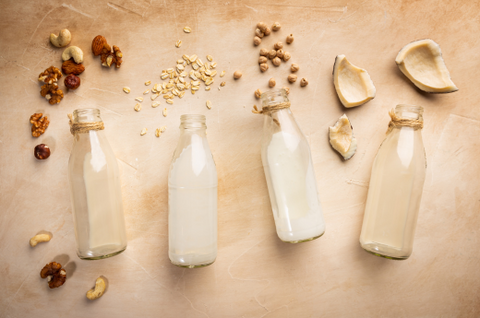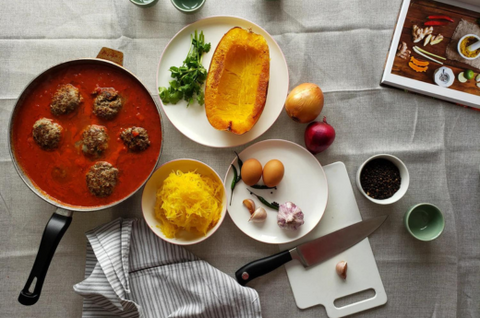Do you want to give your health and well-being a boost? Going dairy-free could be the perfect solution. With more people shunning dairy products for various reasons, discovering the full range of positive effects that ditching dairy can have on your system is becoming an increasingly popular topic. Whether it’s due to ethical or dietary considerations, learning all about the amazing benefits of going dairy-free (and how to make it work) is something that doesn’t get enough attention – so let’s change that today!
In this article, we cover all sorts of great things you need to know about why going dairy free might just be one of the best decisions you ever make for your long-term health. So read on and find out why making a switch nowadays could lead not only to weight loss but also to increased energy levels and improved digestion!

What is dairy-free eating and why is it beneficial to your health and well-being
Dairy-free eating is all about avoiding foods that contain milk and its byproducts, such as cheese, yogurt, and ice cream. It might sound tough, but it can do wonders for your health and well-being. For one thing, dairy is a common allergen that can cause digestive issues in some people.
Going dairy-free alleviates those symptoms and can even help clear up skin problems like acne. It also forces you to explore new foods and experiment with different flavors, since you can't rely on cheese or cream to make everything taste good. So if you're looking to shake up your diet and feel better in the process, give dairy-free eating a try!

Nutritional benefits of going dairy-free
Going dairy-free can have numerous nutritional benefits that go beyond just avoiding lactose intolerance. By cutting out dairy products from your diet, you can reduce your saturated fat intake and lower your risk for heart disease. Additionally, many dairy-free alternatives are fortified with calcium, vitamin D, and other essential nutrients that are typically found in dairy products. Not to mention, it can also be a great way to discover new foods and recipes that you may have never tried before. Whether it's for health reasons or personal preference, going dairy-free can have a positive impact on both your body and palate.

How to make the transition to a dairy-free diet
So, you've decided to take the plunge and go dairy-free, huh? Congrats! Making the switch to a dairy-free diet can be tricky at first, but with a little bit of planning and effort, you'll be well on your way to a healthier, happier you. Start by stocking up on non-dairy alternatives like almond milk, cashew cheese, and coconut yogurt.
Another great way to make the switch is by investing in a vegan cookbook or looking up dairy-free recipes online. This will help you get creative with your cooking and stay motivated on your journey towards a dairy-free diet. Finally, be sure to read food labels carefully and check for hidden sources of dairy that may be lurking in some unexpected places.
These days, there are tons of delicious options out there, so don't be afraid to experiment and find what works best for you. Next, make sure to do your research and read food labels carefully to avoid any hidden sources of dairy. Finally, don't forget to stay positive and patient with yourself - remember, Rome wasn't built in a day! With a little bit of time and effort, you'll be a dairy-free pro in no time.

Different types of dairy alternatives
If you're someone who can't consume dairy due to lactose intolerance or a vegan lifestyle, luckily, there are plenty of dairy alternatives available! From almond milk to soy milk, oat milk to coconut milk, the options are seemingly endless.
Dairy alternatives offer a wide range of choices when it comes to taste, texture and health benefits. Whether you're looking for a dairy-free milk alternative for your morning cereal or to use in baking, there's something out there that will fit the bill. Some popular options include almond milk, soy milk, oat milk and coconut milk. Each has its own unique flavor profile and can provide beneficial nutrients such as calcium, iron and Vitamin D. It's important to consider each type carefully before making a decision about which one best suits your needs. For instance, soy is perfect for creamy dishes or smoothies while coconut could work well in baked goods. Taking all of these factors into consideration can help ensure that you make the right dairy-free choice. By exploring the different types of dairy alternatives, you can find a delicious and nutritious option that works best for you!
Some people have their favorites, while others like to switch it up depending on the day. And not only do these alternatives offer a different taste and texture, but they can also provide unique health benefits. So, whether you're looking for a milk alternative for your morning cereal or to use in your baking, there's definitely an option out there for you to try.

Recipes and dairy-free meal ideas
If you're going dairy-free, it might seem like a daunting task to come up with tasty meal ideas that don't involve milk or cheese. But fear not - there are plenty of options out there! How about a hearty vegetable stir-fry with cashews and a soy sauce marinade? Or a creamy avocado pesto pasta, made with dairy-free cheese and plenty of fresh herbs? For breakfast, try a yogurt alternative like coconut or almond milk yogurt, topped with fresh fruit and granola.
Creating dairy-free meals can be a challenge but with the right recipe and ingredients, delicious and nutritious dishes are possible. Dairy-free diets exclude all forms of cow’s milk, cream, butter, cheese, and other dairy products. Many people find that following a dairy-free diet improves their health and alleviates symptoms of food sensitivities or allergies.
To make sure you’re getting all the essential nutrients your body needs while avoiding dairy products, it’s important to plan out your meals in advance. Take the time to research recipes and think about what types of substitutions might be needed for certain recipes that traditionally call for dairy ingredients. You may also want to consider prepping some of your meals in advance, like making a big batch of soup or chili on the weekend.
There are lots of great dairy-free recipes online that can help you get creative in the kitchen. Some ideas for delicious and nutritious dairy-free meals include a broccoli and quinoa salad with roasted chickpeas, veggie tacos with avocado crema, lentil shepherd’s pie, and vegan pad Thai.
By taking the time to plan out your meals in advance, you can ensure that you’re getting all the nutrients your body needs even when following a dairy-free diet. With some creativity and plenty of recipe inspiration, finding delicious and nutritious meals is entirely possible.

Tips for dining out without consuming dairy products
Are you someone who loves dining out but has to give up the cheesy dishes because of a dairy-free diet? Don't worry, you can still enjoy eating out with a few simple tips. First, do your research beforehand and check the restaurant's menu online for vegan or dairy-free options. You can also call ahead to ask about the ingredients used in specific dishes. It can be helpful to research the restaurant’s menu before going in order to get an idea of which dishes are safe and enjoyable. Many restaurants have allergy information or vegan/vegetarian menus available online for easy reference. When you arrive at the restaurant, don't be afraid to ask your server for recommendations or to make substitutions to your dish. Many restaurants are accommodating to dietary needs, so don't hesitate to speak up.
If the menu doesn't offer many dairy-free options, look for dishes that contain plant-based ingredients such as vegan cheese, nut milks, or tofu instead of animal products like milk and cheese. These can be great substitutes in a variety of recipes.
And if the main course isn’t dairy-free, consider ordering it without any additional ingredients that may include butter or cream. Then try substituting healthier side dishes such as steamed vegetables or a salad with vinegar and oil dressing instead.
Lastly, don't forget to enjoy yourself and savor the flavors of your dairy-free meal. Happy dining!
Transitioning to a dairy-free diet can seem intimidating, but with the right information and preparation, it doesn't have to be. With the rise of many dairy alternatives on the market, it's easier than ever to find ways to enjoy food without sacrificing taste. What's great about a dairy-free lifestyle is that it can not only help you maintain your optimal health and well-being but also be enjoyable for you and those around you. Whether you are looking for recipes or amazing meal ideas, there is something out there that will cater exactly to your dietary needs. So go ahead, and take the time to research, plan and prepare your meals - once you see how easy going dairy-free can be, you’ll never look back!
Frequently Asked Questions
What substitutes for evaporated milk?
There are several substitutes for evaporated milk that can be used in a variety of recipes. Heavy cream, coconut milk (full-fat), lactose-free milk and half-and-half make good replacements. You can also replace evaporated milk with a combination of whole milk and melted butter.
What is a substitute for butter?
Butter can be replaced with a variety of other ingredients depending on the recipe. Olive oil, coconut oil, margarine, applesauce and mashed banana are all popular choices for baking and savory cooking. For a dairy-free alternative use vegetable shortening or nut butters such as almond or peanut butter.
What is soy milk made of?
Soy milk is made from whole soybeans or isolated soy protein that has been mixed with water and often sweeteners. It's usually fortified with vitamins and minerals to make it nutritionally similar to cow's milk. The texture and flavor of soy milk varies depending on the brand and ingredients used.
What substitute for buttermilk?
Buttermilk can be replaced with a variety of other ingredients depending on the recipe. Substitute buttermilk by using yogurt, sour cream, or a mixture of milk and lemon juice. You can also make your own substitute by combining regular milk with an acid like vinegar or lemon juice. Another option is to use dairy-free alternatives like almond or coconut milk with an acid to give it a similar flavor and consistency.







Comments (0)
There are no comments for this article. Be the first one to leave a message!